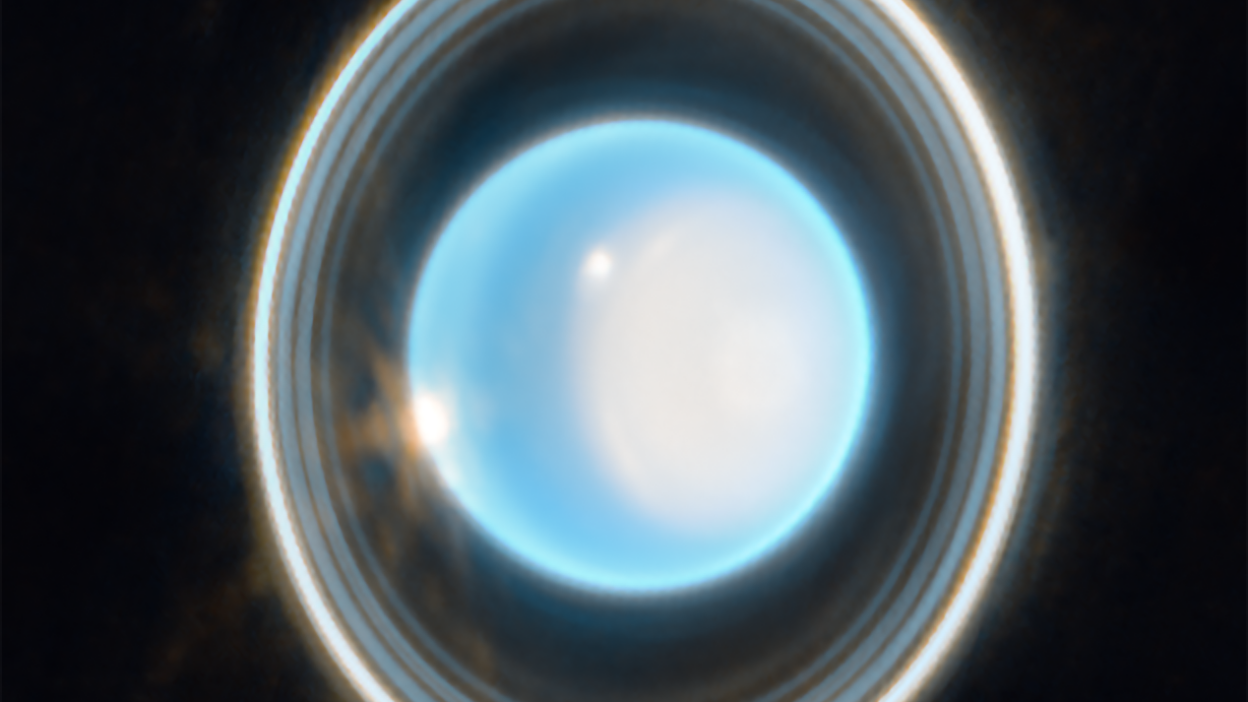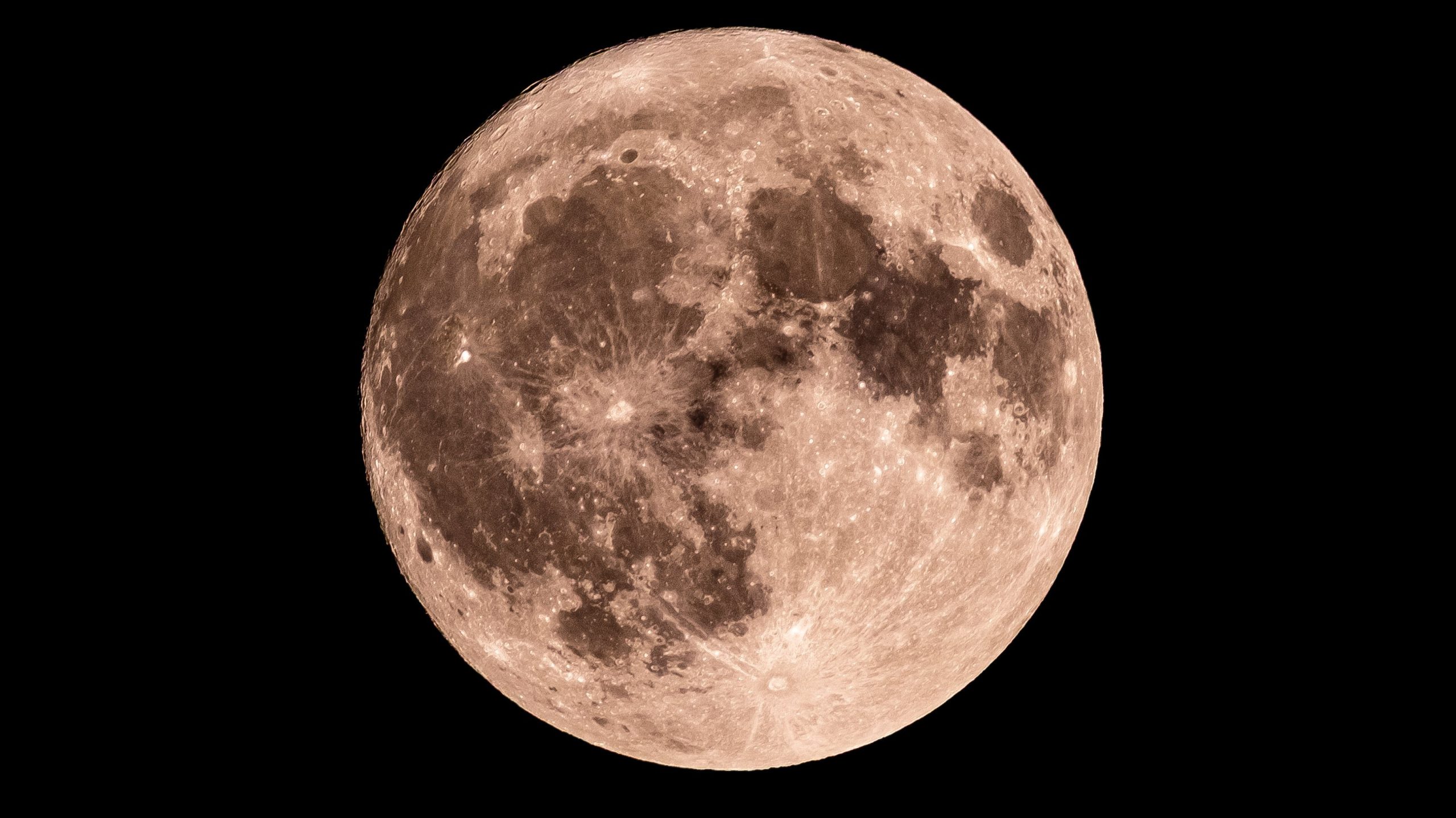Webb telescope just peeked at Uranus and got mooned, literally

The James Webb Space Telescope has spotted a previously unknown moon orbiting Uranus, the solar system’s tilted seventh planet.
This new space discovery brings the ice giant world’s bevy of moons up to 29, a count that includes a yet-to-be-named moon discovered in 2023.
The newest moon likely escaped detection before now because it is so small. These findings, led by Southwest Research Institute astrophysicist Maryame El Moutamid, have not yet gone through the rigorous peer-review process for publication in a scientific journal. But NASA was apparently too excited to wait.
“We’re not sitting on this one,” the space agency said in a Tuesday post on X, “Uranus has another Moon!”
Credit: NASA / ESA / CSA / STScI / M. El Moutamid / M. Hedman
The moon, tentatively designated S/2025 U1, is estimated to be only six miles wide. That might explain how Voyager 2, which flew by Uranus in 1986 during its extended mission, didn’t notice it.
The new moon is the 14th tiny moon known to swarm closer to the planet than the larger ones: Miranda, Ariel, Umbriel, Titania, and Oberon. Recent studies have proposed that the latter four of those bigger moons could have briny underground oceans, dozens of miles deep.
This little moon is about 35,000 miles from Uranus’ center, orbiting between Ophelia and Bianca. Its nearly circular orbit suggests it may have formed near its current location, El Moutamid said.
The team was investigating the Uranian rings when they made this discovery.
“Many of their structures, especially the sharp edges of 10 rings, remain unexplained. These edges should naturally spread within a decade without some form of confinement,” she told Mashable. “Past studies suggest unseen moons between four and 14 kilometers in size could be responsible. We were searching for these potential shepherding moons.”
In 2023, Webb turned its attention to Uranus, capturing an astonishing image of 11 vertical rings around the planet. Prior to that snapshot, most people’s concept of Uranus was that it was simply a bright, blue ball. Uranus, nearly 2 billion miles from Earth, is made from icy materials, such as water, methane, and ammonia, wrapped around a small rocky core.
The planet spins on its side, which gives it the most extreme seasons in the solar system. For nearly a quarter of each Uranian year, the sun shines on one pole, thrusting the other half of the planet into a dark winter lasting more than two decades.
Though the new moon is tiny, that’s part of what makes it an astronomical achievement, said Scott Sheppard, the Carnegie Science astronomer who discovered a Uranian moon using a ground-based telescope in 2023. Such observations near the planet are difficult because their light is usually obscured by the planet’s own glare.
That probably means even more hidden moons exist, he told Mashable, but seeing such faint objects would require extremely long-exposure Webb images or a future spacecraft mission.
Credit: Southwest Research Institute infographic
One exciting aspect of the new lunar discovery is that it’s likely associated with Uranus’ inner ring system, said Sheppard, who wasn’t involved in these Webb observations.
“This new moon likely helps create the rings we see around Uranus, from possibly losing small dust grains off its surface from its very low gravity,” he said, “and also gravitationally shepherding the dust in the observed rings into the well-defined concentric ring circles we see today.”
Neither S/2025 U1 nor the moon Sheppard discovered two years prior, S/2023 U1, have official names yet. Those must be approved by the International Astronomical Union. Sheppard’s moon will require one more observation to further refine its calculated orbit, but that should happen in the next few months, he said. All of Uranus’ moons are named after William Shakespeare and Alexander Pope characters, and the newly discovered moons will follow suit.
The team is hoping the organization will approve the name Violenta for the 2023 moon, Sheppard said, after a character in “All’s Well that Ends Well.”
“Unofficially, this name was chosen for my newly born daughter, who is named Violet,” he said.
Mashable







